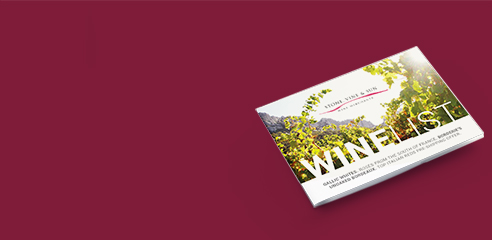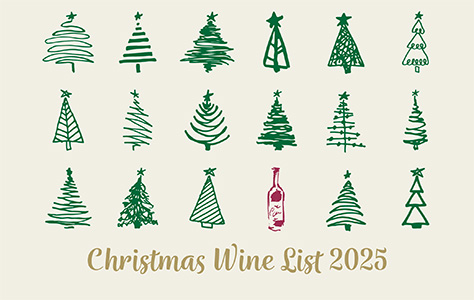Burgundy
The Burgundy Pyramid
Making sense of the complexity of the complexity of Burgundy isn’t easy.
Though Burgundy only comprises 5% of France’s vineyard area, it holds 100 different Appellations, 25% of the entire French total. There are no less than 5,000 growers, 85% of whom own less than 10 hectares, and four fifths of them make wine.
To make matters worse, the fragmentation ensured by the division of property enshrined in the Napoleonic Code means that many growers - Lequin-Colin for example - make 17 or 18 different wines from their 9 hectares of land, as they own little strips of vines in numerous different vineyards.
This table shows the pyramid of quality in Burgundy. Note in particular that only 13% of the wine produced is from 1er or Grand Cru vineyards. (N.B. This may be a little out of date as vineyards are occasionally upgraded)
| No. of appellations | % of all production | |
|---|---|---|
|
Generic Bourgogne (e.g. Bourgogne Rouge) |
21 | 53 |
| Village: Name of Village only (e.g. Chablis) though a name of a single vineyard may be added (e.g. Meursault Les Luchets) | 43 | 34 |
| 1er Cru: Name of Village, followed by 1er Cru and Name of vineyard (e.g. St. Aubin Blanc, En Remilly) | 562 | 11 |
| Grand Cru: Name of vineyard site only (e.g. Echezeaux) | 33 | 2 |
So what goes on the label is, in the case of the last three categories (which make up just under half the total production in Burgundy, excluding Beaujolais) an accurate description of precisely where the wine comes from. Of course this tells you nothing about how good the grower or winemaker was at his job: but that’s where a merchant earns his salt.
The most important thing in Burgundy is THE NAME OF THE GROWER ON THE BOTTLE, not the place it comes from. You can go into a Michelin starred restaurant in France and still get a terribly disappointing bottle of wine from a top appellation.
The double-barrelled Villages
It was the mayor of Gevrey who decided, in an inspirational piece of marketing, to attach the name of the village’s most famous vineyard, Le Chambertin, to Gevrey as a suffix. This was achieved by decree of King Louis-Philippe in 1847. So started a trend which has transformed the names of most of the villages up and down the Côte, culminating after the Great War: in 1922 Pernand conjoined Vergelesses; in 1927 Morey added most of the Clos St. Denis; the next year Auxey stuck on Duresses (not the most inspiring vineyard, but the best available!); and on the 27th November 1929 both Puligny and Chassagne added Montrachet.
Red Burgundy disappointments and “the tunnel”
Many confirmed Bordeaux drinkers won’t buy red Burgundy because they think it is “unreliable”. This can be so - everyone has rued the day they bought some fairly expensive Burgundy, cellared it for several years, and then been horrified by a pale, acidic concoction.
To which we can only say, first, that both viticulture and vinification have improved out of all recognition in Burgundy over the last decade; and second, that Burgundy appears not to age in such a unilinear way as Bordeaux.
When young, Burgundy is as charmingly fruity and sensual as young Bordeaux can be tannic and brutal. Tasting in Burgundian cellars is heaven. However….. often the wines will close up dramatically, and enter what our consultant, John Taylor, MW terms “the tunnel”.
The wine loses all primary fruit, and, puzzlingly, even the wonderful silky texture which made you buy it in the first place. It can then appear lean, charmless, tannic and even downright astringent.
However, it will re-emerge, a few years later, with the fruit now in harmony with melting secondary flavours, soft tannins and all its body restored.
The period of shut-down may vary with the wine or the vintage: many 1996s are still in their closed stage. So if you do have a disappointment with a 1er Cru from a good maker, then do leave the remaining bottles for a period as they may well come right.
We look at our stock regularly and it is fascinating to see how the wines evolve. The 1999s, for example, remained unusually open and fleshy for a very long time, and were sensational to drink young, but many have shutting up shop. Suggesting drinking windows for young red Burgundy is definitely not a science.
The magic of the mid-slope: determinants of quality in the Côte d’Or
- Soils - Largely limestone based, but mixed with slope wash of marl, clay & pebbles.
- The siting of the vineyards - main determinants of quality
- Altitude - Temperature and exposure to wind
- Aspect - Exposure to sun
- Angle of slope - ditto and drainage/run-off
- Depth of soil - Affects vigour
- Composition of Soil - Drainage
All these factors at their best along the line of hills which run on the east of the valley of the Saône from Dijon south to Beaune, and then swinging more towards south-west.
Prices in Burgundy
Prices have risen quite a bit over the last few vintages. There was a big uptick in 2003, when the growers had a very short harvest due to the heatwave - down 30-45% so increased their prices sharply. Knowing they had a great vintage in 2005, many vignerons put their prices up by 10-20%. Whilst they have largely not done so since, the strength of the Euro has done it for them for them.
The villages and key appellations
Côte d'Or - north to south
Gevrey-Chambertin
Gevrey Chambertin is understandably famous. There were monastic vineyards here in the middle ages, belonging to the Abbots of Bèze.The largest Appellation of the Côte de Nuits, it holds no less than 9 of the 24 Grands Crus of the Côte, totalling 87 hectares, 86 hectares of 26 Premier Crus and 369 hectares of Village vineyards. In 1847, as discussed above, it was the first village to append the name of its most famous vineyard, le Chambertin (much beloved by Napoleon) to the name Gevrey.
Just south of the village, on the Route des Grands Crus, one can see clearly the lie of the top vineyards which extend from here south to beyond Nuits-St-Georges: trees on the top of the hills at above 350m, Grand Crus on the mid slope, 1er Crus just below -and occasionally above - the Grands Crus, and Village wines on the flatter land running down to, and sometimes beyond, the RN74.
The wines of Gevrey are unquestionably strong, rich, masculine and they should be grand. However, there are over 80 growers in the village, and some are quite content to trade off their illustrious name. In this village selection of grower is particularly important.
Our grower: Jean-Marie Fourrier of Domaine Fourrier
Morey-St.-Denis
Morey is an unjustly neglected Appellation, simply because of its size, as it is tiny beside Gevrey; and Clive Coates declares that its wines used to be passed off as Gevrey by less scrupulous negociants. However over half the vineyard area is classified Grand or Premier Cru and there are many highly talented winemakers in the village. including Ponsot, Dujac, Roumier, and now Arlaud and Hubert Lignier.
The Grands Crus lie in an unbroken band above the village. Clos de la Roche is at the north end, and has marl and shallow brown soil over limestone. A tiny strip of Bonnes Mares, more stony, lies within the Morey boundary to the south.
The Premier Crus in Morey are almost all tiny, so little known, again perhaps holding the village’s reputation back. The wines may be marked by intense red fruits, and display a lushness and texture all of their own. This village offers arguably the best value of any of the great Appellations of the Côte de Nuits.
Our grower: Domaine Arlaud
Chambolle-Musigny
The name Chambolle derives from “champ bouillant”, a reference to the surging winter floods occasionally caused by the river Grône which comes down from the Haut Côte. For many Chambolle-Musigny represents the epitome of Pinot delicacy and elegance. Here the soils, especially in the Grand and 1er Crus, are very thin, and covered with gravelly debris.
The wines are usually fresh, light and aromatic, but with no lack of body and substance. The aromas truly have that ethereal quality which Pinot lovers seek.
Our grower: Michel Royer of Digioia-Royer
Vosne-Romanée
To Pinot lovers these must be the sexiest words in the French language. This small, architecturally unexciting, sleepy village is the true heart of the Côte de Nuits, rather than the bustling, neighbouring town of Nuits-St.-Georges, stuffed with commerce and tourists. Something of its religious antecedents - the priory of Saint Vivant was founded in 890, and both this Cluniac establishment and the Cistercians had vineyards here - seems to still cling to the village. Even hardened wine-merchants walk round it speaking in hushed tones!
Here are the wines of fable (and fabulous prices too!), from Romanée-Conti and La Tâche. Here the wines can be as perfumed as Chambolle, and as muscular as Nuits, but the finest Vosnes, and not just from the grandest vineyards, exhibit an exoticism, a dusting of aromatic spice, which is quite unique to the wines of this village.
Our growers: Etienne Grivot at Domaine Jean Grivot; Sylvain Cathiard
Chassagne-Montrachet
Chassagne was traditionally a red wine village, and about 60% of the wine from the village is still Pinot Noir. The change started with replanting after phylloxera, was encouraged by relatively better results with Chardonnay, especially from the vineyards on the slopes, and has gathered pace with market forces - now Chardonnay grapes attract a huge premium. Today much of the Village land on heavier soils is still planted to Pinot, but over 70% of the 1er Crus, which run in an unbroken band from the boundaries of Puligny to the north to Santenay in the south, are white. Here the soils are lighter, on oolitic limestone.
Santenay
Santenay is the fourth largest Appellation in the Côte d’Or and probably the best place to seek Pinot at a fair price. In the past Santenays could be rustic, but now the wines are, to quote Coates again (he is usually right!), “increasingly round, fruity and attractive as vinification techniques control the temperature, abandon the stems and forswear excessive pigeage”. A small amount of white wine is also made in the village. It is not well-known, but can be comparable in quality to wines from St. Aubin or Auxey-Duresses at a lower price.
Here the line of hills of the Côte swings round to run towards the west. The best vineyards are all to the east of the village, on the steeply inclined 1er Crus which include Les Gravières and Passetemps. Here there is a lot of gravel in the limestone and marl soils.
Our growers: Denis Clair; François Lequin at René Lequin-Colin
Côte Chalonnaise
South of Santenay the unbroken line of hills which comprises the Côte d’Or ends. Beyond the valley of the Dheune, just a few kilometres away, one enters much more broken hills. There is still limestone and marl, so excellent soils for winegrowing, but exposure and micro-climate becomes important here, especially as the vineyards rise to over 350m in altitude. This can lead to lean fruit in less ripe years, but 1999, 2000 and 2002 were all warm summers.
From north to south the four most important winegrowing villages are Rully, Mercurey, Givry and Montagny. Two thirds of Rully production is white wine: the soil is oolitic marl, like Chassagne, and chalky. Montagny is exclusively white. In Mercurey and Givry the soils are visibly redder and incorporate more clay, so better for Pinot on the whole.
The Mâconnais
A huge area - some 50km from north to south and 15km wide - the Mâconnais is not a homogenous zone. In the north of the region, from the village of Chardonnay southwards, there is a lot more polyculture than in the Côtes to the north. One often sees sheep grazing in the valley floors, strips of maize or other cereals, fruit trees, and plots of vines side by side. Even by French standards this is incredibly pretty and charming countryside, studded with Romanesque churches. Here the vineyards tend to lie along a series of east facing hillsides. Here land around the villages of Viré and Clessé has recently (and deservedly) been raised from Mâcon-Villages status to become the appellation of Viré-Clessé.
Our growers: Domaine des Chazelles, Domaine Olivier Fichet
In the south of the region, west of the city of Mâcon, vines are more dominant, especially in Saint-Véran and Pouilly-Fuissé, the latter centred on the two magnificent rocky outcrops of Vergisson and Solutré.
Our growers: Roger Saumaize at Saumaize-Michelin




